18 February 2021 Edition
Moore Street - developers’ folly or 1916 Cultural Quarter?
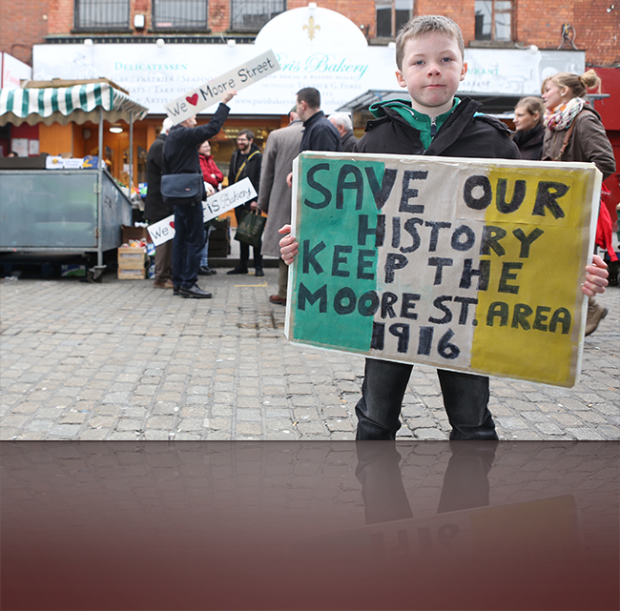
““What’s happening with Moore Street?” is a question often asked and not surprisingly as years pass and this historic area of Dublin City Centre continues to decline, seemingly stuck fast in a planning and political stalemate.
Many hoped that the centenary of the 1916 Rising might see the area rise phoenix-like from the ashes of neglect and decay, but it was not to be. In fact, it was pointed out in 2016 that this 1916 battlefield site perfectly summed up how the ideals of the men and women of Easter Week had been betrayed by corporate interests in league with conservative politicians. Leading Moore Street campaigner James Connolly Heron, great grandson of James Connolly, put it best when he said that the 1916 generation had sacrificed their lives for their country while those who crashed the economy and imposed austerity had sacrificed their country for their lifestyles.
It is down to campaigners like James Connolly Heron and many others that the entire Moore Street 1916 battlefield site was not demolished and replaced with a Celtic Tiger high rise ‘shopping mall’ monstrosity. Such was the plan of property development company Chartered Land before it went bust in the economic collapse and ended up in NAMA.
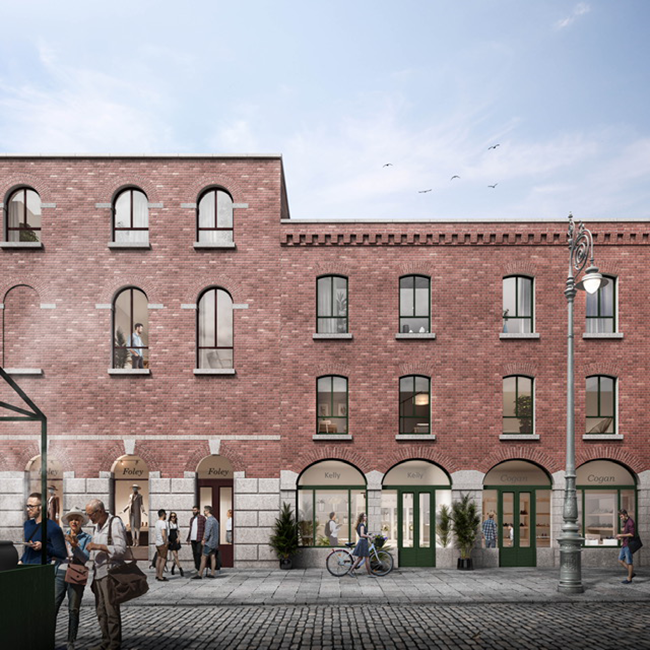
The historic terrace as it should be, in the plan by 1916 relatives and campaigners
With the site in the hands of this state body, there was a perfect opportunity for a new start. Instead, in a deal that once again epitomised how corporate greed was assisted by the state, NAMA facilitated the sale of the site to multinational British-based property development company Hammerson, in a deal known as Project Jewel. The main element of this deal was the sale of Dundrum Shopping Centre, with the ‘add-on’ of the ‘Dublin Central’ site that includes Moore Street.
Hammerson itself is in financial difficulty, given that its business is shopping centres and there was a decline in on-site (as against on-line) retail sales setting in well before the Covid-19 pandemic. So, there is a strong and well-founded suspicion that Hammerson’s plan for the area is designed to increase the monetary value of the site by acquiring fresh planning permission before ‘flipping’ it, that is, selling it on at a profit to another property company.
The site has been the victim of classic property speculation where developers make profits without actually developing anything but creating planning paralysis and urban decay, even on sites as historic and unique as this.
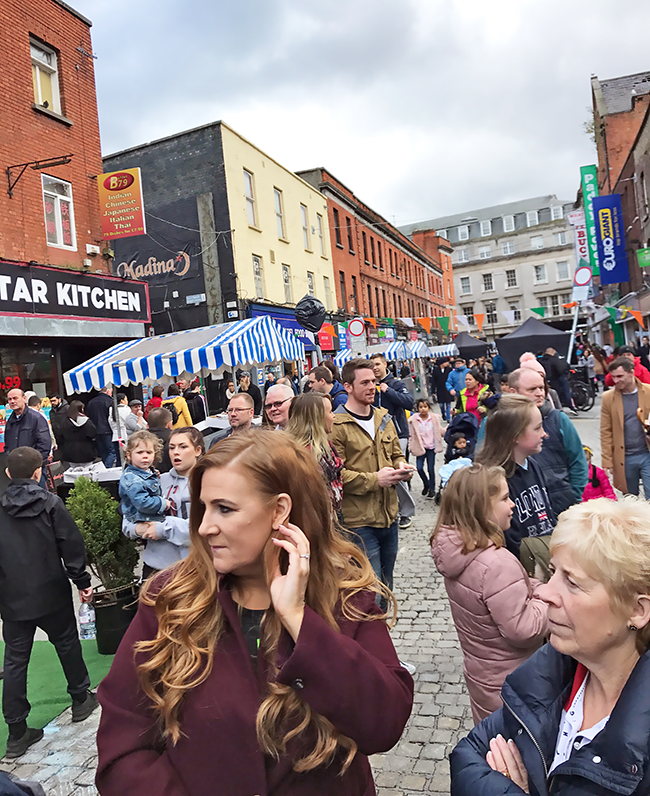
At Spraoi ar an Sráid, the Moore Street Festival, organised in 2018 by Ardmhéara Mícheál Mac Donncha with (centre) Dublin Central Sinn Féin Councillor Janice Boylan
Appeals have been made to successive Government Ministers to intervene, but their activity has been minimal. The most significant intervention was when the public outcry over the demolition threat led to the Ministerial designation of Numbers 14-17 Moore Street as a protected national monument. This is the heart of the site, as it was in Number 16 that the leaders of the Rising, having evacuated the GPO, held their final meeting around the bed of the wounded James Connolly. However, the entire terrace, Numbers 10 to 25, was occupied by the former GPO garrison and, under the latest Hammerson plan, even this terrace will not be left intact. A bizarre high brick arch would cut it in two, to facilitate a walk-through from O’Connell Street. And the wider battlefield site would be radically changed with its original layout and historic fabric removed. The ‘lanes of history’, as they have been described, would be gone.
There is an alternative, a real plan for the preservation of the unique historic fabric and heritage of the site and its rejuvenation, forming a 1916 cultural quarter. Such a plan would also revive and enhance the long street-trading and small shop trading tradition of Moore Street, familiar to generations of Dubliners and visitors.
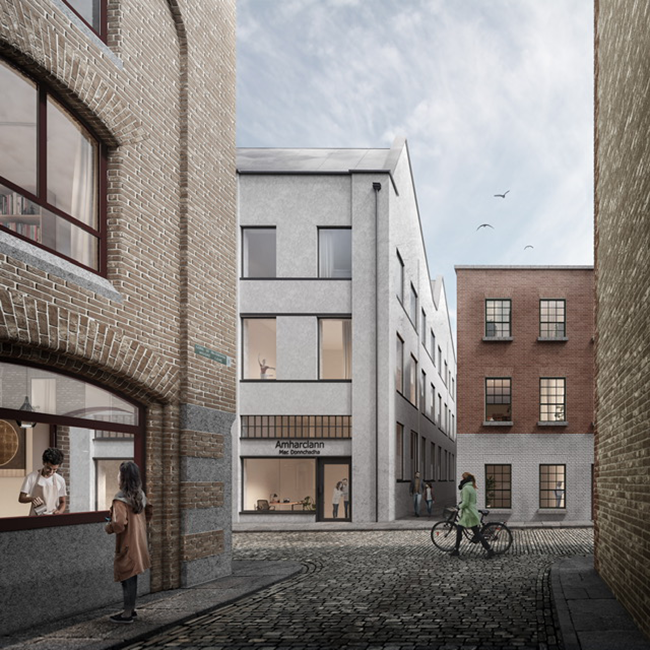
The Moore Street Preservation Trust (1916 relatives and campaigners) plan would restore the original lane that joined to Henry Street and respect the ‘white house’
Moore Street campaigners and 1916 relatives have got together in the Moore Street Preservation Trust and commissioned a plan for how the area could and should be sensitively developed as a place where history can be cherished and where people can live, trade, and enjoy leisure and cultural activities at the heart of the city centre.
The terrace and the lanes of history would be preserved and developed so that, in a revived quarter of the city, the story of the 1916 Rising can be told in a place that is neither frozen in time nor unrecognizable from the past, but vibrant with city life and on a human scale, respecting its unique heritage.
The argument will be made that Hammerson own most of the site, so what can be done? In fact, the Hammerson plan cannot proceed without ministerial consent because of the National Monument status.
Other parts of the site are publicly owned, including Numbers 24 and 25 Moore Street which is a Dublin City Council cleansing depot, and the consent of City Councillors is required if they are to be sold.
The big question is does Hammerson really intend to proceed if they acquire new planning permission? Have they the finances to do so? Or is this yet another phase of speculation while the area is allowed to decline further?
Central Government, Dublin City Council, the National Museum, the traders who work on the street and the Irish people, these are the real stakeholders in this potentially revived historic quarter of our capital, not the shareholders of a multinational property company.
The Battle of Moore Street was fought over a couple of days in 1916. The modern Battle of Moore Street has been fought over many years and it is far from finished.
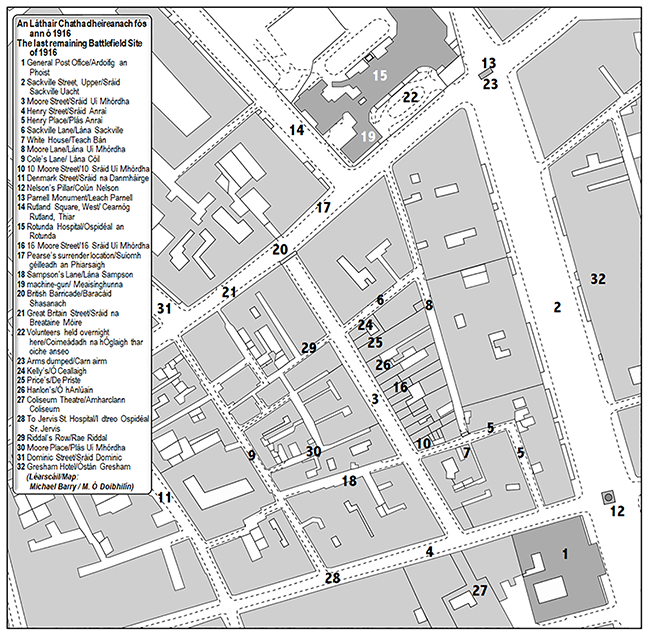
Mícheál Mac Donncha is a Sinn Féin Councillor for Dublin City




